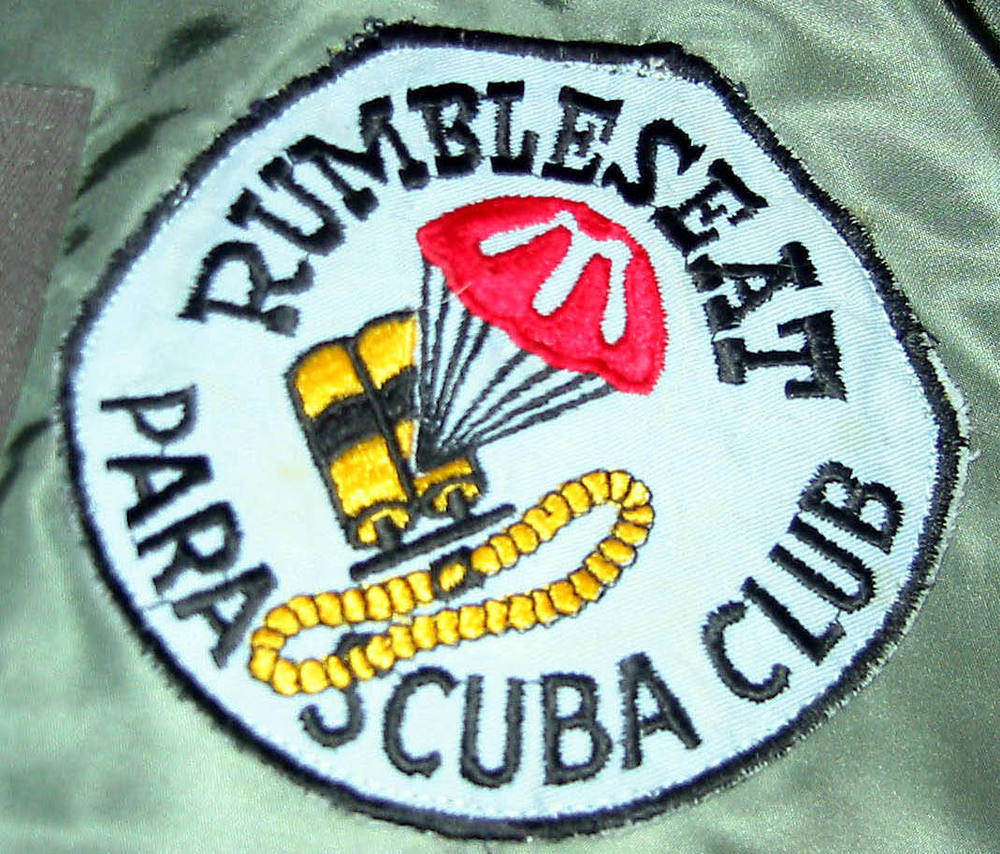Recommended Posts
racerman 0
QuoteWhere's the seventh color? I see red, white, black, blue, yellow, green
Clear of course!Wendy P.
skybill 19
QuoteHe was one of my best friends in this whole, great big world of ours. A great guy & one of the most intense competitors ever; and it never showed.
JerryBaumchen
Jerry, I do remember one of those squares as it was the first one I ever saw. He told me he built it himself. I was pretty young at the time and was quite amazed that someone could actually build a parachute.
I also remember he was super nice and kind of a quite guy. I heard he moved to the west and bought it in a turbine of some kind. I'm happy to have his signatures in my logbook.
Hi Cap,
'Ya must be talkin' bout Jim Lowe?? He showed up at Scare-us-valley one day and was flyin planes out there. First I ever met and had an opportunity to hang around and talk with him. Really nice guy. He was flyin' that Helio Stalion and after he dropped some jumpers and was comming down he developed problems!! Seems the Stallion had a full flying tail and to control the thing ya' flew it with the electric trim tab on the yoke. Seems the trim jammed in the "ON" "Down" position and ran out to the stop!! This happened about 2500' when Jim was settling into the traffic pattern to land. Heard about the accident and the next weekend out at Scare-us-valley all I remember seeing was some twisted orange/yellow wreckage of the plane. It was toast!! Really a drag about losing Jim. It was a really sad day.
SCR-2034, SCS-680
III%,
Deli-out
III%,
Deli-out
SCR216 2
Hello Howard,
I found a white paper with almost the same picture in it.
It is a Domina Jalbert Parafoil
From Notre Dame Aero-Space ~1967
The University of Notre Dame took what was a cross between a concept and demostration-type kite, and converted it into an efficient, aero-dynamic device.
At every other air-cell membrane location, a series of flares is attached beneath the Parafoil wing. There flares act to distribute line forces and cannel air flow such that span-wise flow is reduced, tip looses lessended, and aerodynamic efficiency improved. The distribution of force and aft flare area is critical to stability avout the three axes.
The paper is from the AIAA 5th Aerospace Sciences Meeting in New Your / Jan 1967
AIAA Paper No. 67-200
FLEXIBLE WINGS FOR MANEUVERING AND LANDING
by:
G.T. Barte, Jr
General Elctric Company
Philadelphia, Pennsylvania
This paper has a great comparison of supened flexible wing systems.
Modified Parachutes:
-Parasail and Para-Comander by: Pioneer
-Cloverleaf by: Northrop
Single Membrane Flexible Wings:
-All flexible Parawing by: NASA/LaRC & Irvin (I worked for Ed Drumheller on the Irvin wing when I was 19)
-Sailwing by: Barish & Pioneer
-Small Leading Edge Parawings: Conical, Cylindrical by: NASA
Double Membrane and Inflated Wings:
-Goodyear Wing by: Goodyear
-Jalbert Parafoil by: Norte Dame
-Large LE Parawing by: NASA/LaRC & Others
-Slotted Circular Wing by: North America Aviation S & ISD
The paper also talks about:
-A few Republic Close-Coupled Parawing Bomlet
-Kaman Rotchute
-Barish Flexirotor
-Nielsen-Burnell Flexible Rotor
-Goodyear Inflatable Rotor
And several others.
Regards,
Dennis
I found a white paper with almost the same picture in it.
It is a Domina Jalbert Parafoil
From Notre Dame Aero-Space ~1967
The University of Notre Dame took what was a cross between a concept and demostration-type kite, and converted it into an efficient, aero-dynamic device.
At every other air-cell membrane location, a series of flares is attached beneath the Parafoil wing. There flares act to distribute line forces and cannel air flow such that span-wise flow is reduced, tip looses lessended, and aerodynamic efficiency improved. The distribution of force and aft flare area is critical to stability avout the three axes.
The paper is from the AIAA 5th Aerospace Sciences Meeting in New Your / Jan 1967
AIAA Paper No. 67-200
FLEXIBLE WINGS FOR MANEUVERING AND LANDING
by:
G.T. Barte, Jr
General Elctric Company
Philadelphia, Pennsylvania
This paper has a great comparison of supened flexible wing systems.
Modified Parachutes:
-Parasail and Para-Comander by: Pioneer
-Cloverleaf by: Northrop
Single Membrane Flexible Wings:
-All flexible Parawing by: NASA/LaRC & Irvin (I worked for Ed Drumheller on the Irvin wing when I was 19)
-Sailwing by: Barish & Pioneer
-Small Leading Edge Parawings: Conical, Cylindrical by: NASA
Double Membrane and Inflated Wings:
-Goodyear Wing by: Goodyear
-Jalbert Parafoil by: Norte Dame
-Large LE Parawing by: NASA/LaRC & Others
-Slotted Circular Wing by: North America Aviation S & ISD
The paper also talks about:
-A few Republic Close-Coupled Parawing Bomlet
-Kaman Rotchute
-Barish Flexirotor
-Nielsen-Burnell Flexible Rotor
-Goodyear Inflatable Rotor
And several others.
Regards,
Dennis


Share this post
Link to post
Share on other sites